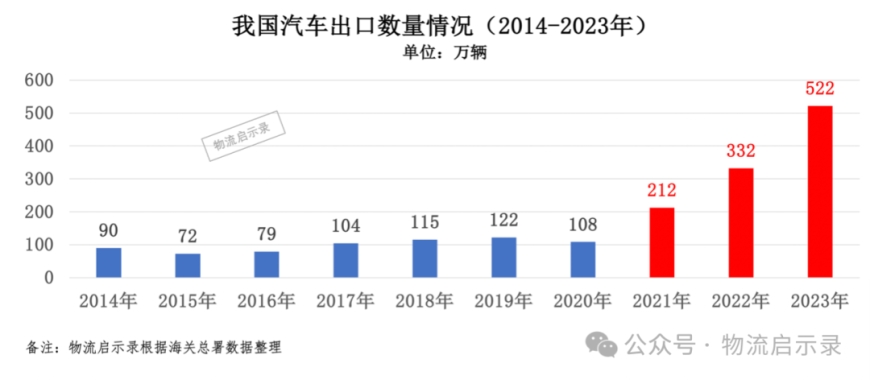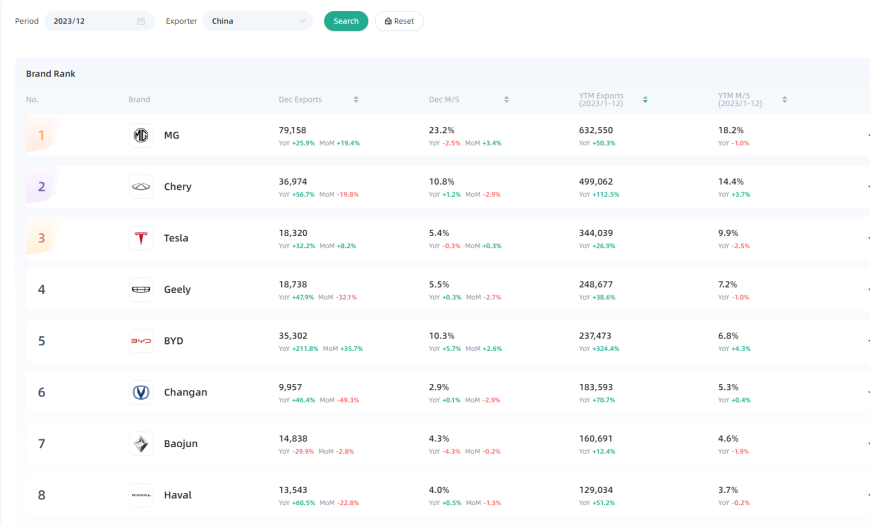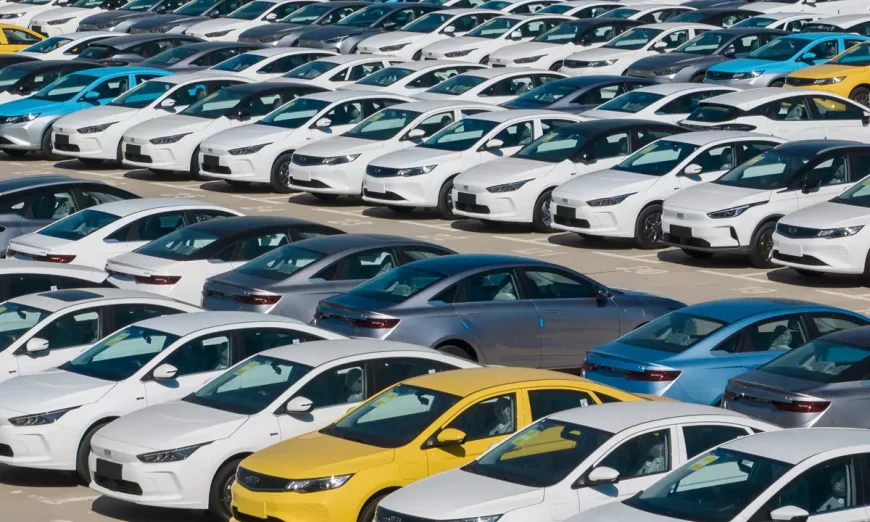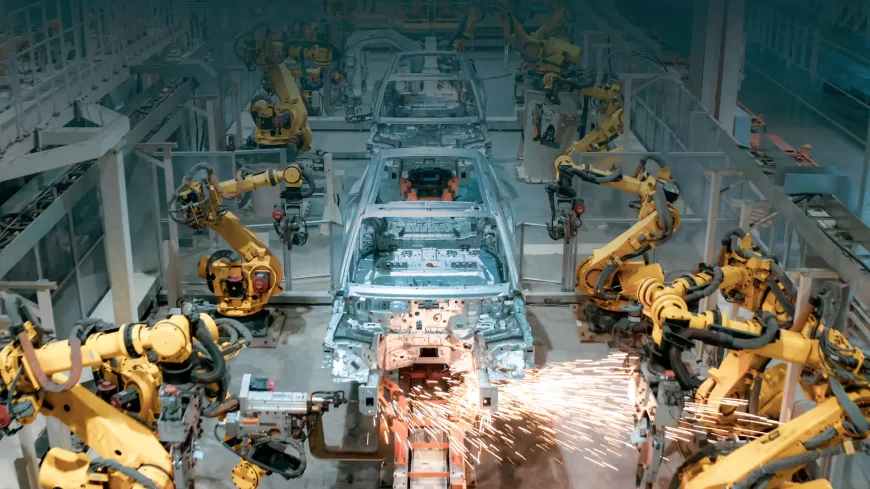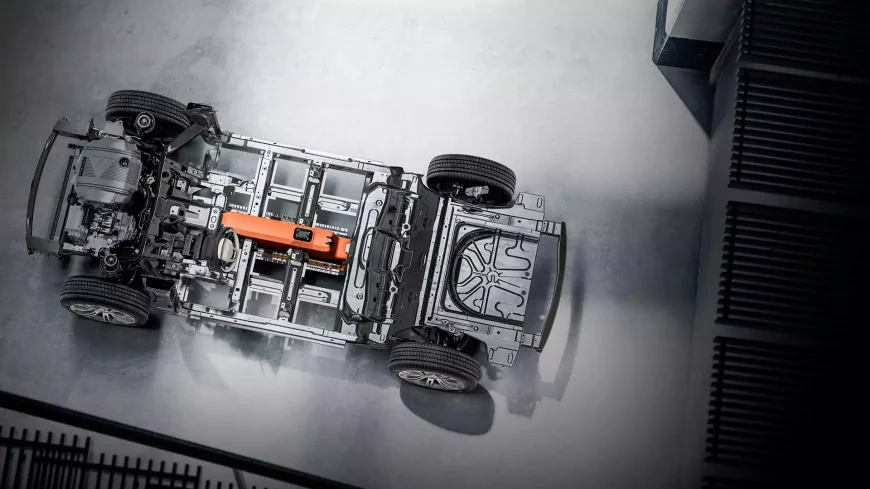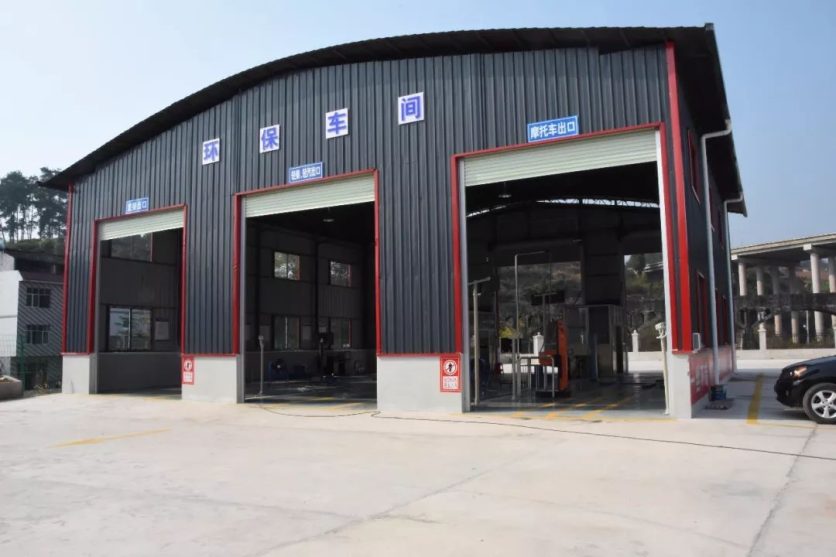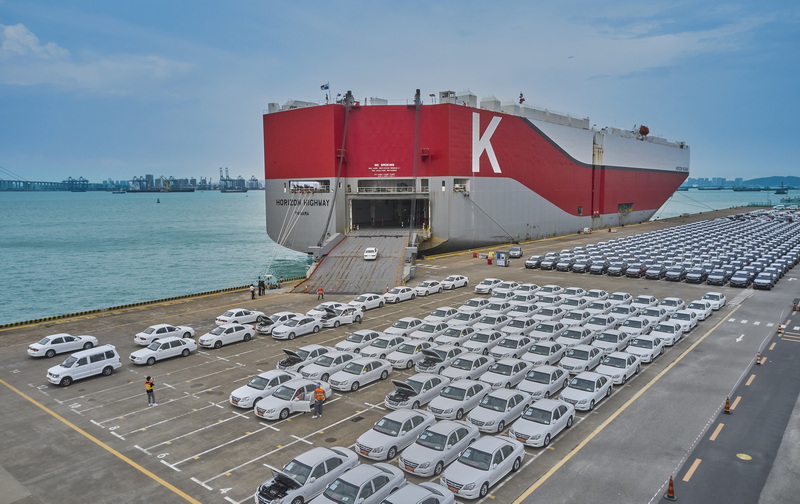What is the current status of the electric car industry in Ethiopia?
Ethiopia has taken a significant step towards sustainable transportation and environmental protection, as evidenced by the growth in the number of electric cars. The Ethiopian Ministry of Transport recently announced that the country’s electric car fleet has surpassed the milestone of 100,000 vehicles, marking a notable achievement in Ethiopia’s efforts to promote clean energy and reduce carbon emissions.
Baru Haksan, Deputy Minister of Transport of Ethiopia, pointed out that the government’s tax incentives and proactive transformation of the automotive industry have greatly facilitated the proliferation of electric cars in Ethiopia. These policies have not only spurred the growth of electric car imports but also encouraged domestic and foreign investors to invest in renewable energy projects in Ethiopia, serving as effective measures to combat the increasingly severe air pollution problem.

Electric car charging station
To support the use of electric cars, cities like Addis Ababa have established 60 charging stations to meet the growing demand for electric cars. The deployment of these charging stations not only provides convenience for electric car users but also demonstrates the Ethiopian government’s commitment to promoting green transportation.
Looking ahead, Baru Haksan revealed that the Ethiopian government plans to further expand the electric car charging network to more cities in regional states. Additionally, the government plans to introduce a range of new electric car models with longer range capabilities to meet the needs of different users. These measures are expected to further accelerate the development of electric car industry in Ethiopia and contribute to the country’s sustainable development efforts.
Top 40 Export Destinations For Chinese Electric Cars
In 2023, China exported 5.221 million vehicles (a year-on-year increase of 57.4%), surpassing Japan for the first time, and becoming the world’s largest exporter of automobiles.

From 2014 to 2023, China’s automobile exports surged from 900,000 vehicles to 5.22 million vehicles, marking a 5.8-fold increase. Particularly noteworthy is the period from 2021 to 2023, during which exports crossed three significant milestones of 2 million, 3 million, and 5 million vehicles.
Here, electric cars have made significant contributions.
In 2023, China exported 1.773 million electric passenger cars (a 67.1% year-on-year increase), accounting for 34% of the total annual exports of automobiles. This means that for every 3 cars exported by China, 1 was an electric passenger car.
Of the 1.773 million electric passenger cars, 1.546 million were pure electric vehicles (EVs). This article analyzes the distribution, quantity, and unit price of these 1.546 million pure EVs by country.
Overall, in 2023, China exported pure EVs to 175 countries and regions, with a total export quantity of 1.546 million units (a 64.1% year-on-year increase), an export value of 240.314 billion RMB (a 76.4% year-on-year increase), and an average unit price of approximately 155,500 RMB per vehicle.
From a regional perspective
Europe
Europe is the largest consumer market for China’s pure electric vehicles (EVs). In 2023, China exported 640,000 EVs to Europe, accounting for 41.27% of the total. The export value amounted to 132.5 billion RMB, representing 55.13% of the total export value, with an average unit price of approximately 207,600 RMB per vehicle. The main importing countries include Belgium, the United Kingdom, Spain, the Netherlands, Germany, Slovenia, France, and Sweden, contributing 37.28% to the total export quantity.
Southeast Asia
Next is Southeast Asia (11 countries), where China exported 310,000 EVs in 2023, accounting for 20.09% of the total. However, the export value was relatively low at 22.3 billion RMB, representing 9.28% of the total export value, with an average unit price of approximately 71,800 RMB per vehicle. The main importing countries are Thailand and the Philippines, contributing 17.55% to the total export quantity.
Central Asia-Middle East
The Central Asia-Middle East market is noteworthy, with China exporting 194,000 EVs to the region in 2023, accounting for 12.57% of the total. The export value was 29.6 billion RMB, representing 12.31% of the total export value, with an average unit price of approximately 152,300 RMB per vehicle. The main importing countries include Israel, the United Arab Emirates, Turkey, Jordan, Uzbekistan, Kyrgyzstan, and Kazakhstan, contributing 11.99% to the total export quantity.
South Asian
The South Asian market is also significant, with China exporting 116,000 EVs to the region, accounting for 7.53% of the total. However, the export value was relatively low at less than 1.7 billion RMB, representing only 0.70% of the total export value, with an average unit price of approximately 14,500 RMB per vehicle. The main importing countries are India and Bangladesh, contributing 7.02% to the total export quantity.
Latin American
The Latin American market has better quality compared to the South Asian market. China exported 72,000 EVs to the region, accounting for 4.65% of the total. The export value was 9.7 billion RMB, representing 4.04% of the total export value, with an average unit price of approximately 135,100 RMB per vehicle. The main importing countries are Brazil and Mexico, contributing 3.17% to the total export quantity.
Other countries
Additionally, there are Australia-New Zealand, Japan-South Korea, and the United States-Canada markets, where China exported 100,000, 52,000, and 33,000 EVs, respectively. They accounted for 6.48%, 3.38%, and 2.12% of the total, with average unit prices of approximately 188,900 RMB, 263,600 RMB, and 186,000 RMB per vehicle, respectively.
Regarding Hong Kong, Macau, and Taiwan, mainland China exported 21,000 EVs to these regions, accounting for 1.37% of the total. The export value amounted to 4.5 billion RMB, representing 1.88% of the total export value, with an average unit price of approximately 213,400 RMB per vehicle.

From a country perspective
Top 3
Belgium is the largest export destination for China’s pure electric vehicles (EVs). In 2023, China exported 175,400 EVs to Belgium, accounting for 11.35% of the total. The export value amounted to 355.5 billion RMB, representing 14.79% of the total export value, with an average unit price of approximately 202,600 RMB per vehicle.
Next is Thailand, with China exporting 155,900 EVs to Thailand in 2023, accounting for 10.09% of the total. The export value was 17.4 billion RMB, representing 7.24% of the total export value, with an average unit price of approximately 111,600 RMB per vehicle.
The third is the United Kingdom, with China exporting 125,000 EVs to the UK, accounting for 8.11% of the total. The export value amounted to 305 billion RMB, representing 12.7% of the total export value, with an average unit price of approximately 243,600 RMB per vehicle.
From 4 to 10
Following are the Philippines with 115,400 vehicles, Spain with 92,400 vehicles, Australia with 86,400 vehicles, India with 58,600 vehicles, the Netherlands with 55,000 vehicles, Israel with 50,500 vehicles, and Bangladesh with 50,000 vehicles.
The top ten countries accounted for 62.43% of the total export quantity and 58.31% of the total export value.
Top 40 countries
The ranking and unit price details of China’s export destinations for pure electric passenger cars are listed in the following table:
| Ranking (by quantity) | Region | Quantity (unit) | Quantity proportion |
| 1 | Belgium | 175437 | 11.35% |
| 2 | Thailand | 155910 | 10.09% |
| 3 | Britain | 125314 | 8.11% |
| 4 | Philippines | 115423 | 7.47% |
| 5 | Spain | 92395 | 5.98% |
| 6 | Australia | 86437 | 5.59% |
| 7 | India | 58577 | 3.79% |
| 8 | Netherlands | 55002 | 3.56% |
| 9 | Israel | 50541 | 3.27% |
| 10 | Bangladesh | 49957 | 3.23% |
| 11 | Germany | 41156 | 2.66% |
| 12 | Canada | 39904 | 2.58% |
| 13 | Brazil | 36921 | 2.39% |
| 14 | slovenia | 34801 | 2.25% |
| 15 | United Arab Emirates | 34610 | 2.24% |
| 16 | France | 33481 | 2.17% |
| 17 | Türkiye | 32614 | 2.11% |
| 18 | Uzbekistan | 28410 | 1.84% |
| 19 | South Korea | 20824 | 1.35% |
| 20 | Jordan | 20678 | 1.34% |
| 21 | China Hong Kong | 20481 | 1.32% |
| 22 | Sweden | 18685 | 1.21% |
| 23 | New Zealand | 13688 | 0.89% |
| 24 | Indonesia | 13159 | 0.85% |
| 25 | USA | 12363 | 0.80% |
| 26 | Mexico | 12006 | 0.78% |
| 27 | Japan | 11968 | 0.77% |
| 28 | Malaysia | 11645 | 0.75% |
| 29 | Italy | 11377 | 0.74% |
| 30 | Norway | 10508 | 0.68% |
| 31 | Kyrgyzstan | 10457 | 0.68% |
| 32 | Poland | 8915 | 0.58% |
| 33 | Russia | 8503 | 0.55% |
| 34 | Kazakhstan | 8063 | 0.52% |
| 35 | Nepal | 7438 | 0.48% |
| 36 | Costa Rica | 5840 | 0.38% |
| 37 | Belarus | 5166 | 0.33% |
| 38 | Singapore | 4385 | 0.28% |
| 39 | Vietnam | 3780 | 0.24% |
| 40 | Colombia | 3717 | 0.24% |
Overview of China’s Car Exports in January 2024
According to data from the GlobalNEVS platform, China exported 319,600 passenger vehicles in January 2024, a year-on-year increase of 50.14%. Among them, the export of new energy passenger vehicles was 93,900, accounting for 29.38% of the total passenger vehicle exports.
The export growth rate of automobiles is fast
The export growth rate of passenger vehicles in China is rapid, with electric vehicles accounting for over one-third of the total.
According to data from the GlobalNEVS platform, China’s passenger car export growth has remained above 60% for the past three years. Since surpassing the milestone of one million units in 2021 with passenger car exports reaching 1.64 million units, exports further increased to 2.676 million units in 2022 and reached 4.426 million units in 2023, surpassing the 4-million mark with a remarkable growth rate of 65.4%.
The export performance of China’s new energy passenger cars has also been impressive. In both 2021 and 2022, the growth rate of China’s new energy passenger car exports exceeded that of overall passenger car exports. In 2023, China exported 1.682 million new energy passenger cars, accounting for 38.01% of the total passenger car exports.


The country with the highest number of exports from China in 2023
The country that received the most exports of passenger vehicles from China in 2023 was Russia, with a year-on-year growth of over five times.
According to data from the GlobalNEVS platform, in 2023, the top three destination countries for Chinese passenger car exports were Russia, Mexico, and Belgium. In 2023, China exported a total of 756,000 passenger cars to Russia, a year-on-year increase of 555.4%. China exported 346,000 passenger cars to Mexico in 2023, a year-on-year increase of 66.2%. China exported a total of 212,000 passenger cars to Belgium in 2023, a year-on-year increase of 4.5%.

In 2023, the top four brands of Chinese passenger car exports to Russia were Chery, Haval, Geely, and EXEED. These four brands also ranked as the 2nd to 5th best-selling car brands in Russia in 2023.
Chery, ranking first, exported nearly 163,000 passenger cars to Russia in 2023, with a year-on-year cumulative increase of 307.2%, making it the second-best-selling brand of passenger cars in Russia in 2023. Haval, ranking second, exported nearly 119,000 passenger cars to Russia in 2023, with a year-on-year cumulative increase of 253.2%. Geely, ranking third, exported over 84,000 passenger cars to Russia in 2023, with a year-on-year cumulative increase of 244.1%.

In 2023, BYD’s passenger vehicle exports saw a year-on-year growth of 324.4%
So, which brands are the main players in China’s passenger car exports? According to data from the GlobalNEVS platform, in 2023, the top three passenger car exporters from China were MG, Chery, and Tesla.
Among them, MG brand exported over 632,000 passenger vehicles in 2023, with a year-on-year growth of 50.3%. Chery brand exported over 499,000 passenger vehicles in 2023, with a year-on-year growth of 112.5%. After establishing a factory in Shanghai, China, and commencing production, Tesla also contributed to the increase in China’s passenger car exports. Tesla brand exported over 344,000 passenger vehicles in China in 2023, with a year-on-year growth of 26.9%.
Additionally, the export volume of BYD brand is worth noting. BYD exported over 237,000 passenger vehicles in 2023, with a year-on-year growth of 324.4%. Among them, electric passenger vehicles accounted for 84% of the exports, while plug-in hybrid passenger vehicles accounted for 16%. According to “China Newsweek” report, as of January 2024, BYD passenger vehicles have entered 59 countries and regions.

In 2024, China’s passenger car exports are expected to exceed 5 million units
Despite geopolitical changes and the impact of the COVID-19 pandemic on global automotive supply chains, China’s automobile exports have continued to rise. The increasing penetration of China’s new energy vehicles in the global market is attributed to its complete automotive supply chain and support from various countries’ policies.
Some industry experts predict that China’s passenger car exports will exceed 5 million units in 2024. Taking advantage of this favorable growth trend, Chinese automotive manufacturers and auto parts suppliers will accelerate their industrial layout worldwide. Automotive industry-related companies around the world can also seize cooperation opportunities in the trend of automobile exports, ushering in more development opportunities.
What Advantages Does China Have in Car Exports?
China is emerging as a dominant car exporter in the automotive industry. It is not only solidifying its position within its own country but also making significant contributions to car exports at the global level. Its global success has sparked curiosity about those factors that confidently enable China to gain prominence in the automotive export market. If you are also curious about the advantages that will enable China to lead the competitive list in exporting cars, then let’s explore its benefits and satisfy your curiosity about China car exporter industry.
This guide is all about the reasons for China’s success as car exporter.

Reasons for China’s Success as a Car Exporter:
China continuously makes amazing achievements in the automotive sector and car exportation globally. Let us uncover the prominent reasons for China being the leading car exporter.
1- Large Manufacturing Capacity:
China’s large manufacturing capacity is one of the main reasons behind its success as a car exporter. It means that China can manufacture cars on a massive scale quickly through its skilled workers and big factories. Since 2009, China has produced more than 32% of its vehicles annually compared to other countries. It successfully surpasses the combined production of Japan, the United States, and the European Union.
According to the estimates for 2024, China is considered the largest automobile market in the world in terms of ownership and sales. This large and quick manufacturing capacity automatically urges global customers to export cars from China, contributing to its success as a car exporter.
2- Technological Advancements:
Technological advancements are crucial in boosting China’s reputation as a car exporter. Surprisingly, automakers in China are investing in research and development, leading to breakthrough accomplishments in automotive technologies. As of 2020, China’s total spending on R&D was predicted to be over $370 million.
It accounted for 2.4% of its total GDP. Moreover, China is utilizing advanced technologies such as automaton production to ensure the precise and efficient production of cars. These technological advancements help the car exporters in China to fulfill the demands of global customers, helping it solidify its position as leading car exporters.
3- China is a global leader in electric vehicle production:
China is becoming a global and foremost producer of electric vehicle production. It manufactures eco-friendly electric vehicles through advanced technologies with the help of supportive government and robust manufacturing infrastructure. At the global level, China accounts for about 60% of the electric vehicle sales currently.
It is also leading the world’s top countries, such as Japan and Germany, which are well-known for their automotive production. According to the 2022 estimations, the sales of electric vehicles in China were elevated by 82%. It accounts for about 60% of the electric vehicle sales worldwide. In short, China is focusing on green transportation and gaining success in the automotive industry through electric vehicle production.
4- Diverse Product Offerings:
China is gaining global popularity as a car exporter in the automotive sector because it offers diverse products to its customers. In China, car exporters export and manufacture a wide range of automobiles through their competitive expertise. These range from compact cars to other luxury vehicles that easily meet the preferences of global customers. This diverse production of cars and other vehicles allows China to compete globally. It also helps it get the various market segments of the world, helping to make the economy strong. It increases its competitiveness and contributes to its success as car exporters.
5- Customization for Car Models:
China’s car manufacturers customize cars for many global customers to meet their demands. It is greatly helping its success as a car exporter. As of 2021, China’s modification and customization market was valued at 10 Billion U.S dollars. It is predicted that in 2025, it may reach 31.2 billion dollars. Besides cars, pick-ups, sport utility vehicles, and multi-purpose vehicles are considered the most popular models modified and customized in China. It is also popular for the exterior modifications of different vehicles, including brake systems, bumpers, wheel styles, shock absorbers, grille styles, and colors. The owners of the cars may have to apply for the ‘alteration registration’ before modifying any part of the cars. It ensures the safety of the vehicles and makes China a certified car manufacturer and exporter.
6- Lower Production Costs:
China’s success as a car exporter is due to its lower production cost, instead of producing a bulk amount of vehicles at a constant rate. Car manufacturers in China manufacture cars and other vehicles at competitive prices because of access to abundant labor resources and vast manufacturing infrastructures. Moreover, government policies are also helping Chinese manufacturers reduce production costs. Instead of reducing production costs, the Chinese maintain the quality of the cars. There is no denying that they are producing high-quality cars at low production costs, which contributes greatly to China’s success as a car exporter.

Why is Guangcai Auto the best exporter in China?
GuangCaiAuto is considered the best exporter in China, leading the global competition. It has more than 200 stores and 10000㎡ warehouse. We have more than 20 years of experience in car export trading and are confidently exporting our top-quality luxury vehicles globally.
GuangCaiAUTO quality control is crucial to guarantee the caliber of automobiles being exported. Customers can be reassured by performing in-depth inspections, giving precise car descriptions, and providing warranties or guarantees.
We offer customization and personalization that are specifically catered to the demands of our clients. This might entail finding certain car models, setting up personalized adjustments, or giving valuable customers VIP treatment.
Our car exports at reasonable rates and offer competitive before-sale and after-sale customer services. You will surely not regret it if you want to purchase and export your desired car models.
Conclusion:
Based on the above-discussed data, China is making significant progress in the global auto-exporting community. There is not a single reason for helping it become a reputable car exporter worldwide, but several other reasons. These reasons mainly include its large car manufacturing capacity, technological advancements, massive production of electric vehicles, and diverse products with different models and customization options. These reasons help China compete and maintain a prominent position as a global leading car exporter.
Why import cars from China?
China is on the front lines for every industry. The rising technology and practical solutions to tackle car manufacturing have urged Chinese companies to manufacture top-tier cars. Some top names, such as TESLA, BYD, Geely, and GM, are reigning in the industry. More and more countries import cars from China now.
Estimate the worth of the Chinese car industry by looking at the real-time data from Statista. According to it, the Chinese car industry will reach 471 billion USD in 2024. So many reasons compel the users to import cars from China. In this guide, we will go through various factors for importing and tell you the benefits of importing from China.

Why import cars from China; Open Doors to Technology
You might ponder why import from China. Why not use the USA or European countries for the import? Assimilate the following reasons:
● Advanced technology
China is ahead of its time in terms of technology. Drive the automated EV vehicles or think about the next-level driving assistance in the MG vehicles. You can’t miss the charm of excellent entertainment in the sedan from Geely.
Comfortable seating, infotainment, and advanced user safety, all options boost driving confidence. Smartphone integration to user voice recognition, you get all the advanced solutions in a single car. Such technology is less likely to be available around the globe. That can be the reason behind the immense popularity and high demand for Chinese vehicles.
● Variety of car options
There are tons of car companies in China. You get diverse companies, costs, technology, and user experience. Plus, it has a grip over the different types of vehicles ranging from traditional to advanced EV vehicles with better driving features.
If you need the best EV car, BYD Atto and TESLA models will surely catch you. Cheap to expensive vehicles allow you to define your budget and purchase the suitable one. Isn’t that amazing?
● An endless list of suppliers
Don’t think about the monopoly of some top car brands. Instead, there are a variety of suppliers, from Xpeng to MG and Tesla. If you don’t like the one, head over to another one and discuss your project. Tell your demands, and minimize costs and expenses by negotiating the costs.
Hundreds of suppliers will extend your thinking and broaden your views about the cars. You’ll get a perfect vehicle that matches your needs.
● Quality assurance
Most people misconcep about low-quality cars from China. It is a myth, not a fact, since China is number one for cars. It is because of excellent quality control. Engineers check the car’s quality pre-production, during, and after production.
Cars go through revisions in case of single errors in functionality. Don’t worry about the low quality! For all partners who purchase vehicles from Guangcaiauto, if there are any non-human-caused problems with the vehicle during the warranty period, Guangcaiauto will resolve them. You can rest assured knowing they have the insurance in place. Warranty periods ensure a good quality of car.
● New launches every day
You won’t believe it, but lots of car companies launch manu cars every single year. Most of them go hit because of the ultimate features available at affordable costs.
In the same budget, you get tons of options with different features. Some of them will hit your vibes and allow you to bag it. Even for car sellers, it can be a good idea because you bring more options to your shop and increase consumers’ accessibility.

● Affordable Cars
One of the biggest reasons for thinking about the China cars is the affordable cars. Moreover, government taxes are not very high, leading to decreased overall costs of the vehicles. A wave of high competition among the companies benefits the users with the reduced costs of the same expensive cars in other countries.
If you have plans on buying affordable SUV cars, China is the right spot. Not only you’ll get the best price but also a diversity of options.
How do you import cars from China?
Importing from China isn’t child’s play. Instead, you need the licenses, government verification, and customs clearances. Let’s take on each factor separately.
● Uncover the Right Vehicle
Which vehicle do you want to buy? Go on and decide on it. Take time, read the specs, and compare features among the different cars. Vote for the best-branded cars yet at affordable costs.
● Find out the suppliers
Once you have found the right vehicle, choose the right supplier. Negotiate the costs and be ready for the next step.
● Hire reliable shipping services
A reliable shipping service is the hit of the time. Remember, importing cars from China requires a national export license. Not every supplier or shipping can ship the products.
Find the right company, such as Guangcai Auto. Consider us a one-stop service that allows you to source, procure, and customize.
We prepare export documentation and arrange transportation, vehicle warranty, and aftermarket parts supply.
● Understand the rules of cross-border shipments
Cross-border shipment involves various licenses, documents, and entry of only the allowed products. Get detailed knowledge of documents and requirements from the customs website.
● Choose shipping options
Do you have a bulk order? Go for sea shipping. Otherwise, Railway transportation is reliable, fast, and affordable, with good safety in transit. Based on your needs, you can prefer the correct shipping option.
● Know customs clearance
Customs go through your products. Assess the quality and rule out the presence of any explosive or prohibited products. They charge the customs duties in that case. Prepare the documents and get ready to undergo inspection. Once you get a clean chit from the customs, you are prepared for car reception on your doorstep.
● Ship and receive products
The shipping service will ship the cars to your doorstep. Be there and confirm the quality, quantity, and correct model of your vehicles.

Conclusion
Before you import from China, walk through your budget, check the quality, and ensure a seamless shipping experience. What if we tell you to get all this in one place?
Yes, it is possible with the Guangcai Auto. It is a Chinese company ready to pledge for the best car sourcing, quality assurance, and flawless shipping. Save time, get exemplary cars, and enjoy your adventure. Talk to experts for your project now!
IS CHINESE ELECTRIC CAR RELIABLE?
There is no doubt in saying that Chinese electric car dominates the Western market. In recent years, China has emerged as a global leader in the manufacturing and selling electric vehicles (EVs). The subsidies provided by the Chinese government and the increased demand for EVs worldwide have helped China emerge as a global leader. But are Chinese electric cars as reliable as the Western competitors?
Besides Chinese electric cars dominating the global and domestic markets, their reliability is still a question for some. This blog addresses this concern and explains why Chinese electric cars are as reliable as their Western counterparts or might even be better.

How did China become the leading EV Manufacturer?
The story behind China becoming a world leader in EV car manufacturing starts in the early 2000s. It was the time when China was producing Internal Combustion Engines (ICE) at a rapid pace. Even the West could not match the manufacturing pace in China.
At that time, the Chinese automobile industry decided to shift to electric vehicles. Several factors supported this decision. The most important concern was to reduce street pollution. Huge potential payoffs in the future were another factor. The most crucial factor was that China was self-sufficient in all the raw materials. Also, an early start could lead to making the country an EV manufacturing giant.
What makes a Chinese Electric Car Reliable?
Although China is a leader in EV manufacturing and export, many people still question the reliability of Chinese Electric cars. Here are several factors that explain what makes a Chinese electric car reliable.
1. Best Battery Technology
The most critical component of an electric car is its battery. China is the largest manufacturer of batteries. China manufactures almost all the components of electric car batteries. Be it the anode, the cathode, or the diaphragm, it makes it all.
The assembly of the battery requires a purification plant. Assembling the batteries is a technical and complex task. Because of the low labor cost and more equipment manufacturers, China’s battery factories are half the cost of North American or European countries.
Chinese electric car has the best battery technology. Chinese EV manufacturing companies have diligently adopted innovative technology to produce efficient batteries. From exchanging knowledge to adding smart hardware, they have yet to leave any stone unturned.
In terms of the EV battery range, China has won. The Chinese Lithium Phosphate battery (LFP) provides a range of 500 kilometers compared to the European alternative. The European lithium nickel manganese cobalt oxide (NMC) offers a range of 700 kilometers.
2. Environmental Friendly
Is a Chinese electric car truly environmentally friendly and sustainable?
This question might come to your mind
Instead of petrol, the nerdy source of an EV is electricity from the grid. This reduces petroleum combustion. According to Statista 2019, almost 66 percent of Chinese consumers preferred EVs over conventional vehicles. The main factors behind their buying decision were environmental friendliness and government subsidies.
A significant concern is that coal is China’s primary electricity source. To cope with this issue, China has incorporated research and development. Combined research from Harvard University and Tsinghua University Beijing suggests a solution. Their study suggests that private EV owners should slowly charge their vehicles during off-peak hours. Adoption of the same strategy across the world can be equally effective. This shows China’s commitment to manufacturing environmentally friendly electric cars.
3. Fit and Finish
The fit and finish of Chinese electric cars will surprise you. Along with the substantial value for money, the visually appealing features of Chinese electric cars are undeniable.
All the electric vehicles coming from China are well-built and have premium trims. The interior of the cars is impressive in terms of material. Be it the door panel the speaker grille of the center console, everything is pleasing.
So many features, great looks, and competitive prices make Chinese electric cars great. Furthermore, Chinese manufacturers are continuously working to make them more efficient. There is no error in saying Chinese electric vehicles are good inside and outside.
Besides the fantastic fit and finish, Chinese EVs are available in many models. It doesn’t matter if you want a small car or an SUV; you have Chinese cars in all. Chinese luxury electric vehicles are also close behind any Western competitor.
4. Long Driving Range
Chinese electric cars remain unbeatable in terms of long driving range. This is not just a claim. Facts back this statement. A Chinese EV manufacturing company, Nio, launched a car last year that traveled 648 miles on a single charge; 648 miles are equivalent to approximately 1042 kilometers; this long driving range by Nio’s ET7 is still unbeatable by any competitor.
Nio, with an impressive battery capacity and long drive range, is an exception. Other Chinese electric cars are also not far in efficiency in terms of long driving range,
A general perception is that low temperatures affect the driving range of electric vehicles. Chinese electric cars have proved this perception wrong as well. Recently, China’s Human Horizons HiPhi Z was the champion in terms of the winter efficiency challenge. This Chinese electric car surpassed all its rivals regarding accurate winter range. During a harsh winter test in Norway, this car surpassed Tesla and Toyota. This further ensures the remarkable driving range of Chinese Electric cars.
5. Exceptional Performance
High torque and powerful performance are the core characteristics of Chinese electric cars. Strong electric motors provide fast acceleration and, consequently, exceptional automotive performance.
Whether the environmental conditions are challenging or on highways, these cars always show excellent driving force. Several other factors also drive their exceptional performance. These include using innovative technology regarding safety, communication, and autonomous driving functions.
These Chinese electric cars are equipped with intelligent displays, advanced navigation systems, and smartphone connectivity features. Autonomous driving features make driving safer and more accessible. Before, these features were associated with just West-made EVs. Chinese electric cars provide a cheap alternative with the same features.
Conclusion
The high-end features of Chinese electric cars, such as powerful batteries, long driving range, and exceptional driving performance, make them ideal for today’s era. They are environmentally friendly and sustainable options compared to traditional combustion engine vehicles. With an attractive fit and finish and several models to choose from, the Chinese electric car is reliable and economical.
Used Car Export Car Inspection Content

Manual inspection
(1)Whether it belongs to the prohibited export vehicle type
Exported used vehicles that meet the scrapping standards specified in the “Motor Vehicle Mandatory Scrapping Standards” and have been used for less than 1 year (including 1 year) according to the specified requirements shall not be inspected.
(2)Basic inspection
The inspected motor vehicle should have no obvious oil, water, or gas leaks, the tires should be intact with normal tire pressure, the tire sidewalls should be intact without cracks, the engine should run smoothly, and there should be no faults related to the Anti-lock Braking System (ABS), Electric Power Steering (EPS), and other safety-related systems.
(3)Car uniqueness check
According to the “Vehicle Registration Certificate” and “Vehicle Registration Certificate,” check the vehicle type, brand/model, vehicle identification number (or vehicle model and factory number), and engine number of the inspected motor vehicle.
Determine the main characteristics and technical parameters of the motor vehicle (outer dimensions, wheelbase, curb weight, approved seating capacity, railing height, rear axle leaf spring number, emergency exits for buses, passenger passages and aisles, cargo compartments), and calculate the rear overhang for trucks to confirm whether it matches the content recorded on the certificate and vehicle product label.
For trucks, trailers, and buses longer than 6 meters, relevant length, width, and height dimensions should be measured, and the vehicle identification number (or whole vehicle factory number) and engine number should be checked for signs of alteration.
(4)Car Exterior Inspection
① The interior and exterior of the vehicle (cabin) should be free from obvious defects that affect driving safety and require rectification.
② Check if the cargo compartment installation is secure, whether the railings and floorboards are neat and the strength is sufficient, and whether the safety frames are intact.
③ Check if the passenger car has front and rear bumpers, if the truck has a front bumper, and whether they are intact.
④ Check the reliability of the fixing of the folding cab.
⑤ The tire specifications should match the vehicle registration information. The wheel hub should not have obvious deformation, and the tire tread and sidewall should not have cracks and cuts exceeding 25mm in length or depth sufficient to expose the tire cord layer, as well as other defects, abnormal wear, bald spots, and deformations affecting use.
⑥ For trucks with a total weight greater than 3500kg, specialized operation vehicles with modified truck chassis, and trailers, the side and rear lower protective devices should be normal and effective, and the side protective devices between the tractor and trailer of truck trains should be normal and effective.

(5)Lighting and Electrical Signaling Devices
① Check if the front lighting and signaling devices, including front position lamps, front turn signal lamps, front hazard warning signal lamps, clearance lamps, and trailer identification lamps, are complete and functioning properly, and if the high and low beam switching function of the headlights is normal.
② Verify if the rear lighting and signaling devices, including rear position lamps, rear turn signal lamps, rear hazard warning signal lamps, clearance lamps, brake lamps, rear fog lamps, rear registration plate lamps, reverse lamps, and rear reflectors, are complete and functioning properly.
③ Ensure if the side turn signal lamps, side marker lamps, and side reflectors are complete and functioning properly.
(6)Engine Compartment
① Open the engine hood (or flip the cab) and visually inspect all visible engine systems and components to ensure they are complete and functional. Check if the battery terminals are securely connected to the wires, and examine the bundling, fixing, and insulation protection of visible electrical wires. Ensure that all types of pipelines are intact, securely fixed, and free from flammable materials.
② For vehicles equipped with hydraulic brakes (including hydraulic transmission clutches), visually inspect the fluid level in the reservoir and check for any leaks.
(7)Engine Operation
① Check if the engine can start normally. Start the engine and inspect the idle operation, power charging status, and the normal functioning of all gauges and indicators. Check if the engine can return to idle state smoothly when the throttle is released abruptly during rapid acceleration and at high RPM, and whether there are any abnormal conditions such as “backfiring” or “misfiring”. Inspect for any leaks of water, oil, or air, and ensure that the water temperature and oil pressure indicators are normal. Check if the engine can quickly turn off after the ignition switch is turned off. For diesel vehicles, also check if the shutdown device is flexible and effective.
② During engine operation and parking, there should be no leakage from the radiator, water pump, cylinder block, cylinder head, heater, or any connecting parts.
(8)Interior Inspection
① Check if there are any sharp protrusions inside the vehicle that could cause injury (such as sharp corners or edges).
② Check if the door locks and hinges are functioning properly; ensure that the door locks lock and unlock both from the inside and outside normally.
③ Ensure that all seats are equipped with effective seat belts, and verify that the seat belts are complete and functional.
④ All windows and windshields should be intact.
(9)Chassis Dynamic Inspection
① Steering System:
Check if the vehicle has automatic self-centering capability and the ability to maintain straight-line driving while in motion.
② Transmission System:
During vehicle operation, check if:
The clutch operates smoothly and normally.
③ Brake System:
Drive straight at a speed of about 20 km/h, lightly hold the steering wheel with both hands, then quickly release the brake pedal after braking firmly. Preliminarily assess the coordination time, release time, and whether there is any deviation during braking. For pneumatic brake vehicles, depress and release the brake pedal several times to lower the brake air pressure to below the starting pressure (if not specified, use 400 kPa), and check if the low air pressure alarm device is activated.
④ Gauges and Indicators:
During the chassis dynamic inspection, the inspector should pay attention to observing if there are any abnormal conditions with various gauges and indicators installed in the vehicle.
⑤ After continuous driving of the motor vehicle, observe all components to ensure there are no leaks.

(10)Inspection of Vehicle Chassis Components
① Steering System Components:
All components should not be loose.
There should be no interference or friction during steering.
② Transmission System Components:
Components such as the gearbox should be securely connected.
The transmission shaft, universal joint, intermediate bearing, and support should not have cracks or looseness, and there should be no obvious oil leakage.
③ Driving System Components:
The longitudinal and transverse beams of the chassis should not have obvious deformation or damage, and rivets and bolts should not be missing or loose.
The rods and guide rods between the axle and suspension should not be loose or displaced.
④ Brake System Components:
The brake master cylinder, wheel cylinder, brake lines, etc., should not have air or oil leakage, and the brake hoses should not be cracked, flattened, or bulging.
There should be no friction or loose fixation between the brake system pipelines and other components.
⑤ Other Components:
The engine mounting should be reliable.
The exhaust pipe and muffler should be securely installed.
The fuel tank should be securely fixed and should not leak oil; there should be no rubbing between the fuel pipeline and other components.
Related articles:
Concepts and processes related to China’s used car export
What conditions do enterprises need to meet to export used cars in China?
In China, what kind of cars are prohibited from being exported?
In China, what kind of cars are prohibited from being exported?
Nowadays, the car export business in China is booming. The majority of it is parallel export, which means first purchasing brand new cars and then exporting them in the form of used cars.
In order to safeguard various interests and ensure safety, the Chinese government has imposed some necessary restrictions on the export of used cars.

The following are the circumstances under which the export of used cars is prohibited
(1) Vehicles that meet the scrapping standards specified in the “Motor Vehicle Mandatory Scrapping Standard Regulations” and vehicles that have been used for less than one year (including one year) from the prescribed scrapping deadline;
(2) Vehicles under mortgage, pledge, or under customs supervision;
(3) Vehicles that are seized or detained by supervisory organs, people’s courts, people’s procuratorates, or administrative law enforcement departments in accordance with the law;
(4) Vehicles obtained through illegal and criminal means such as theft, robbery, or fraud;
(5) Motor vehicles with discrepancies between the information recorded in the motor vehicle registration certificate and the actual vehicle;
(6) Smuggled or illegally assembled vehicles;
(7) Vehicles with incomplete statutory certificates or vouchers;
(8) Vehicles with unqualified inspection results;
(9) Vehicles with unresolved road traffic safety violations or traffic accidents;
(10) Other vehicles prohibited from trading or exporting by laws and regulations.
The above are the standards for cars prohibited from export. If you don’t know where to buy a reliable car, then you’ve come to the right place on our website.
Related articles:
Concepts and processes related to China’s used car export
What conditions do enterprises need to meet to export used cars in China?
Used Car Export Car Inspection Content
What conditions do enterprises need to meet to export used cars in China?
In China, enterprises applying to engage in the export of used cars must meet the following conditions:

(1) Manufacturing Enterprise
1. Registered within the territory of the People’s Republic of China with independent legal personality;
2. Listed in the Announcement of Road Motor Vehicle Manufacturing Enterprises and Products by the Ministry of Industry and Information Technology;
3. Export products produced by the enterprise;
4. The enterprise operates legally and in compliance with laws and regulations on safety production, environmental protection, taxation, customs, and foreign exchange management, with no outstanding violations to be rectified and no serious breaches of trust.
(2) Circulation Enterprise
1. Registered within the territory of the People’s Republic of China with independent legal personality;
2. Has fixed business premises and used car display and sales venues, with experience in automobile sales or trade;
3. Possesses the capability for used car appraisal and assessment, employing at least three professional appraisal and assessment personnel;
4. The enterprise operates legally and in compliance with laws and regulations on safety production, environmental protection, taxation, customs, and foreign exchange management, with no outstanding violations to be rectified and no serious breaches of trust.
Related articles:
Concepts and processes related to China’s used car export
In China, what kind of cars are prohibited from being exported?
Used Car Export Car Inspection Content
Chinese Used Car Export Related Concepts
(1) Concepts of Used Cars and Used Car Export Enterprises:
A used car refers to a vehicle that has been traded and transferred ownership from completing the registration procedures until reaching the national mandatory scrapping standards (excluding tricycles and low-speed cargo vehicles) and trailers.
A used car export enterprise refers to an enterprise registered and engaged in the export of used cars within the territory of the People’s Republic of China.

(2) Basic Business Processes of Used Car Export:
1. Nationwide Vehicle Collection:
Acquire vehicles domestically, sign trading contracts; clear vehicle transaction procedures with complete documentation; export tax refunds must have value-added tax special invoices; used cars with more than one year before the scrapping period.
2. Transfer for Export:
Lawfully transfer used cars to be exported at the vehicle management office or registration service station; verify the legality of vehicles to prevent illegal vehicle transactions; transfer to be exported should be conducted in the name of enterprises with qualifications for used car exports; annotate “Transfer for Export” on the motor vehicle registration certificate; for vehicles acquired from different places, there is no need to return to the city where the export enterprise is located for transfer.
3. Refurbishment and Preparation:
During the vehicle preparation period and before customs clearance, export enterprises should establish pre-export supervision measures to prevent illegal use and operation of vehicles; based on customer requirements and the enterprise’s refurbishment standards, beautify the appearance and interior of vehicles, improve performance, and make necessary modifications.
4. Export License:
Apply for an export license through the “Unified Platform for Business Systems of the Ministry of Commerce” enterprise side; for each batch, submit an export license application form, original or scanned copy of the Motor Vehicle Registration Certificate, export sales contract, product inspection report issued by a third-party testing agency, a self-declaration of no uncorrected illegal activities or serious dishonest acts by the agency, a declaration that the exported vehicles meet the access standards of the target export market (stamped with the enterprise seal), and a “Commitment Letter of Used Car Export Enterprise”; one license per batch (20 vehicles).
Special Note: The number of license applications should match the actual quantity for customs clearance (the actual quantity for customs clearance should not exceed or be less than the number of licenses). Clearance should be completed in one go; if the declared quantity is less than the applied quantity, a new license should be applied for (i.e., the original license is cancelled and a new one is processed. It should not be misunderstood as reapplying for a license for the remaining unexported vehicles).
5. Warehouse Booking and Port Collection:
Commission freight forwarders to book shipping schedules and warehouse space; freight forwarding companies can be responsible for the entire process of transit logistics and port collection and shipment; at least one week before customs declaration, vehicles should enter the port customs supervision area.
6. Export Customs Declaration:
Apply the national customs clearance integration model; enterprises can independently choose the place of export customs declaration and exit port; enterprises can declare customs through the local single electronic window; customs conduct inspection, release, and subsequent management; customs declaration requires documents such as the Used Car Export License, sales contract, invoice, packing list, product inspection report issued by a third-party testing agency, a self-declaration of no uncorrected illegal activities or serious dishonest acts by the agency, a declaration that the exported vehicles meet the access standards of the target export market (stamped with the enterprise seal), etc.; for customs clearance in some destination countries, an “Certificate of Origin” is required, which can be obtained through contact with provincial/municipal CCPIT.
7. Vehicle Deregistration:
Within two months after the completion of customs export procedures (it is recommended that enterprises start counting from the day of handling the transfer of vehicles for export and complete the cancellation procedures within 60 days), apply for deregistration to the public security traffic management department in the city where the enterprise is located or where the motor vehicle is registered, with the export declaration form and relevant certificates prescribed by laws and regulations; before applying for vehicle deregistration, traffic safety violations and traffic accident issues involving exported vehicles should be resolved.
The above business processes and related procedures are for reference only, and actual operations should be based on the actual situation.
It is worth mentioning that the new cars sold on guangcaiauto.com are also exported in the name of second-hand cars and go through the second-hand car export procedures. You can also call it parallel import, which can save you a lot of money.


